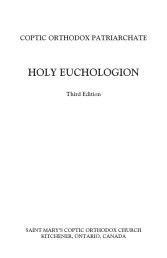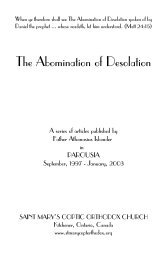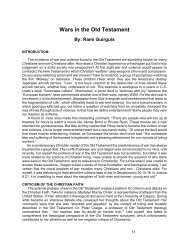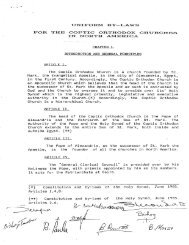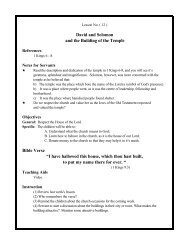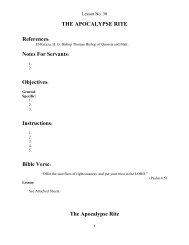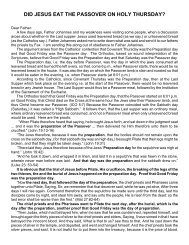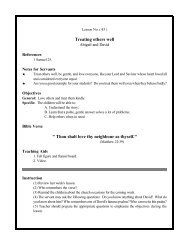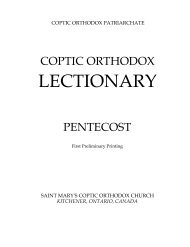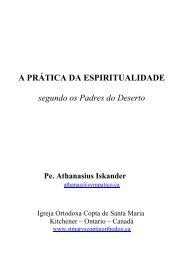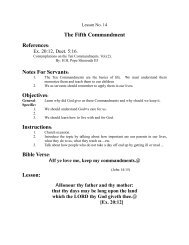Creation - St. Marys Coptic Orthodox Church
Creation - St. Marys Coptic Orthodox Church
Creation - St. Marys Coptic Orthodox Church
You also want an ePaper? Increase the reach of your titles
YUMPU automatically turns print PDFs into web optimized ePapers that Google loves.
losing their information indefinitely. 1<br />
This can be seen in breeding, which is artificial selection (as opposed to<br />
natural selection), the principle is exactly the same as natural selection.<br />
People have been able to breed all sorts of varieties from wild<br />
horses–big working horses, miniature toy ponies, and so on. But you<br />
can’t start with a horse and end up with an elephant.<br />
Genetics and evolution have been enemies from the beginning of<br />
both concepts. Gregor Mendel, the father of genetics, and<br />
Charles Darwin, the father of modern evolution, were<br />
contemporaries. At the same time that Darwin was claiming that<br />
creatures could change into other creatures, Mendel was showing<br />
that even individual characteristics remain constant. While<br />
Darwin’s ideas were based on erroneous and untested ideas<br />
about inheritance, Mendel’s conclusions were based on careful<br />
experimentation. Only by ignoring the total implications of<br />
modern genetics has it been possible to maintain the fiction of<br />
evolution. 2<br />
Science Text books like to introduce two topics as “proof” of Darwin’s<br />
original theory (Classical Darwinism), Darwin’s finches and the<br />
peppered moth. So what about these “proofs”?<br />
DARWIN’S FINCHES:<br />
Darwin's finches are an excellent example of the way in which<br />
species’ gene pools have adapted in order for long term survival<br />
via their offspring. ... Finches have adapted to take advantage of<br />
feeding in different ecological niches. Their beaks have evolved<br />
over time to be best suited to their function. For example, the<br />
finches who eat grubs have a thin extended beak to poke into<br />
holes in the ground and extract the grubs. Finches who eat buds<br />
and fruit would be less successful at doing this, while their claw<br />
1 http://www.answersingenesis.org/creation/v23/i3/muddywaters.asp<br />
2 http://www.answersingenesis.org/creation/v23/i3/muddywaters.asp<br />
60



